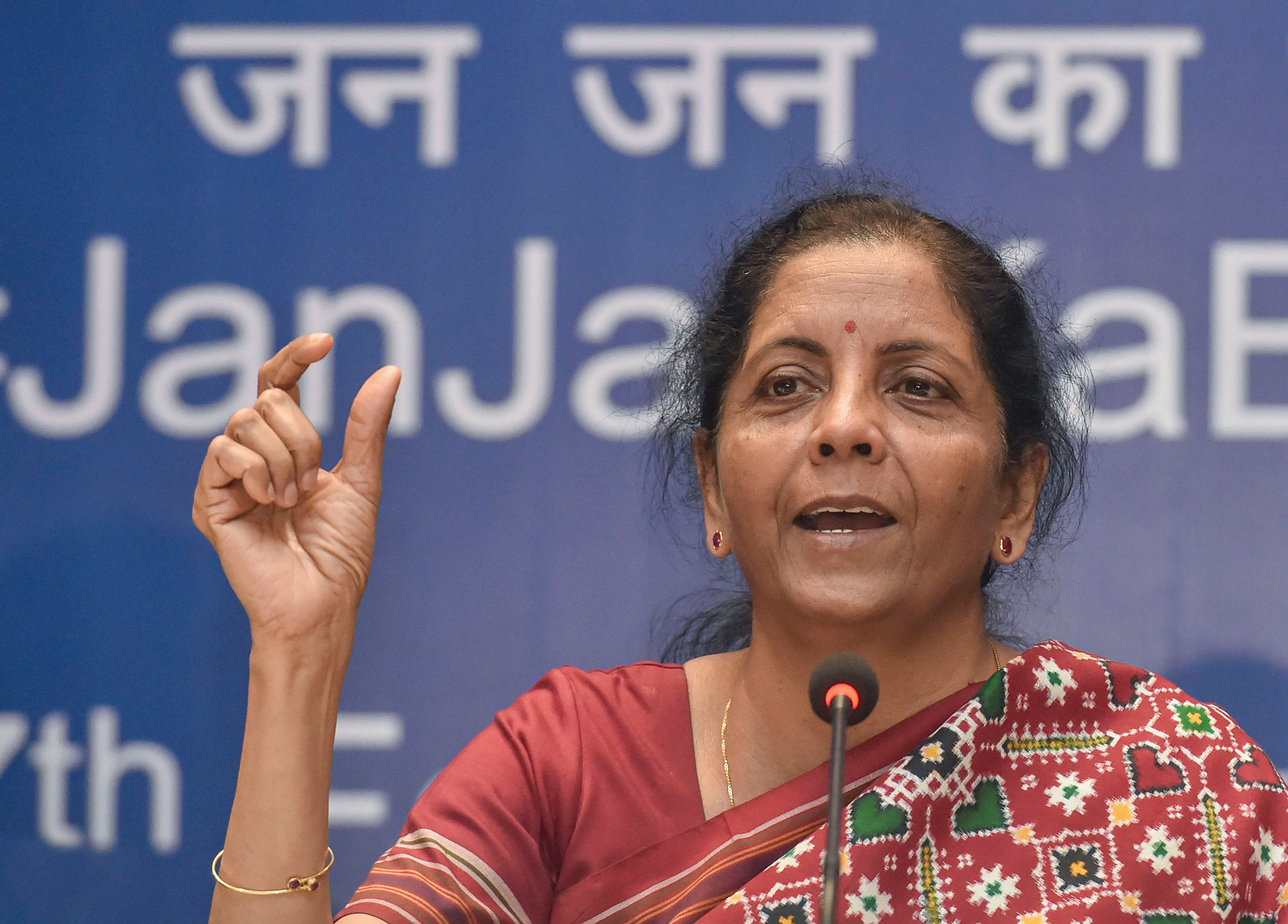
Within days of hiking the deposit insurance five-folds to Rs 5 lakh per account, Finance Minister Nirmala Sitharaman on Friday said her ministry is working on the controversial Financial Resolution & Deposit Insurance (FRDI) Bill, but added she is not sure when it will be tabled in the House.
The government was forced to withdraw the FRDI Bill from the House after Opposition members objected to it, especially the bail-in clause to banks, which many fear is detrimental to depositors.
Late finance minister Arun Jaitley in August 2017 introduced the FRDI Bill in the Lok Sabha, which had proposed a comprehensive resolution framework for revival/closure of financial institutions, including banks, insurers, NBFCs, and cooperative banks. But could not go ahead with the same.
A year later in August 2018, the then finance minister Piyush Goyal was forced to withdraw the Bill, following concerns raised by the public on the 'bail-in' clause and also due to conflict of opinions with various regulators, including the Reserve Bank.
The government then proposed to set up an independent resolution corporation to carry out a speedy and efficient resolution of financial firms in distress. The Bill was then referred to a joint House committee.
According to the bail-in clause, proposed for the first time in the country, customers of a failing financial institution would bear a part of the cost of resolution by reducing their claims.
Despite government clarifying that the bail-in clause will be sparingly used, concerns persisted among the public, and the government believed that it was one the main reasons for the spurt in cash withdrawals seen that year.
The finance minister's comments assume importance given the massive five-fold hike in deposit insurance and the recent changes in the insolvency laws to include insolvency provisions for financial institutions, following which leading mortgage player DHLF was sent to NCLT last November.
"We are working on the FRDI Bill; but not sure when it can get through the House," the minister told reporters here without elaborating.
The minister's comment also comes a day after the Reserve Bank had clarified that the spike in deposit insurance will not hit the balance-sheets of banks as the insurance premium will go up by just 2 paise from 10 paise now.
The move also comes at a time when many financial institutions, especially NBFCs and cooperative banks, are showing signs of deep stress.
The bankruptcy code takes care of resolution for ailing non-financial firms, but doesn't cover deposit-taking financial companies. While DHFL became the first NBFC to be sent to NCLT last November, IL&FS, much larger than the former was been taken over by the government in October 2018.
There were string failures among the cooperative banks with the largest being the bankruptcy of PMC Bank with over Rs 11,800 crore of public deposits. That apart more than two dozen cooperative bank managements were superseded by the RBI in 2019 from Maharashtra alone.
Many analysts argue that financial sector companies need a special resolution regime as the main purpose is to safeguard the interests of depositors and prevent prudential risks from spilling over into a systematic concern.
Commenting on the impact of the deposit insurance hike on banks' bottomline, Reserve Bank deputy governor B P Kanungo on Thursday said the five-fold hike would not have much impact on bank balance-sheets.
The budget had permitted the Deposit Insurance and Credit Guarantee Corporation (DICGC) to raise deposit insurance coverage to Rs 5 lakh from Rs 1 lakh.
The DICGC, a wholly-owned subsidiary of the Reserve Bank of India, provides insurance cover on bank deposits. At present, the DICGC provides Rs 1 lakh insurance to a depositor regardless of the deposit amount, in case the lender fails or gets liquidated.
"The premium is something, which we consider, will increase from 10 paise to 12 paise per Rs 100 for the time being. So, the impact on bank balance sheets is not likely to be much," Kanungo told reporters.
According to analysts, the premium burden on banks following the insurance cover hike will go up by 20 per cent.